When Murray was crowned the boy king of Queens
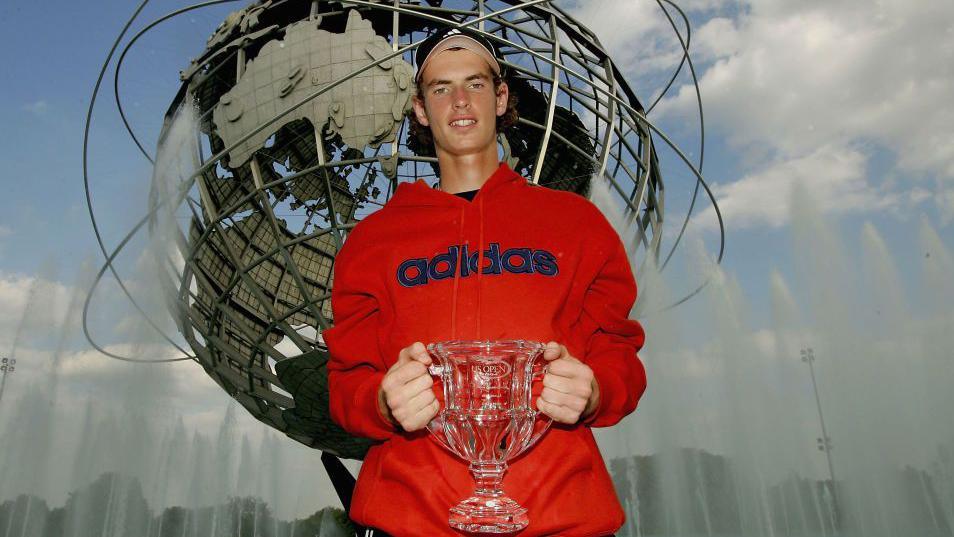
Andy Murray added the 2012 men's title to this 2004 US Open junior trophy
- Published
It's a rare summer where Andy Murray is not in a New York state of mind - but this is it.
Twenty years after announcing himself to the world with a US Open boys' title, Murray is beginning his retirement properly with a family break in Spain.
Tennis is happening and Murray is not a part of it. This will take some getting used to.
Murray, in a reflective moment, might cast an envious glance at his 17-year-old self, the boy who by his own reckoning was "nowhere near as good" as Tim Henman but was perhaps already Scotland's greatest-ever tennis player. The boy with healthy hips and a golden future.
The boy who fell head over heels for the Big Apple.
How he'd love to do it all over again.
Remember the name
Tennis star Andy Murray as a 14-year-old on the road to success
It was while sitting courtside at Flushing Meadows for the 2003 US Open women's final - an all-Belgian battle between Justine Henin and Kim Clijsters on Arthur Ashe Stadium - that Murray realised that if he could make it anywhere, he'd really like to make it here.
Later, Murray said: "The atmosphere and everything that goes with the centre court here kind of suits my personality a bit more than Wimbledon."
And at Flushing Meadows on Sunday, 12 September 2004, Murray had his first taste of Grand Slam glory.
He defeated Sergiy Stakhovsky 6-4 6-2 to become a junior champion on a modest outside court, watched by a few hundred spectators.
During that tournament, he was known as Andrew Murray to those of us covering his progress, external - until we learned that only his grandparents called him Andrew.
When mum Judy stood to acclaim the life-changing victory, she was wearing a T-shirt bearing the large-print logo 'FRED PERRY'. Absolutely no pressure.
Not everyone with a stake in the game could be there.
"I watched the game by looking at the score point-by-point on the internet," said his grandfather Roy Erskine afterwards. "I had a large whisky watching the updates on the screen."
Murray's crush on New York blossomed. In 2005, he met his future wife Kim at the US Open, and in 2012 he beat Novak Djokovic to become Britain's first men's singles major winner since Perry, 76 years earlier.
"I've always loved Wimbledon, but since I came here as a junior, it was the first time I ever stayed in a five-star hotel," Murray said in 2008. "New York is one of my favourite cities. I love it."
What next for Murray after his retirement?
- Published2 August 2024
Judy Murray frustrated by lack of Scottish legacy as Sir Andy retires
- Attribution
- Published2 August 2024
Murray hailed 'greatest sportsman' as career ends with Olympic exit
- Attribution
- Published2 August 2024
'Nowhere near as good as Tim'
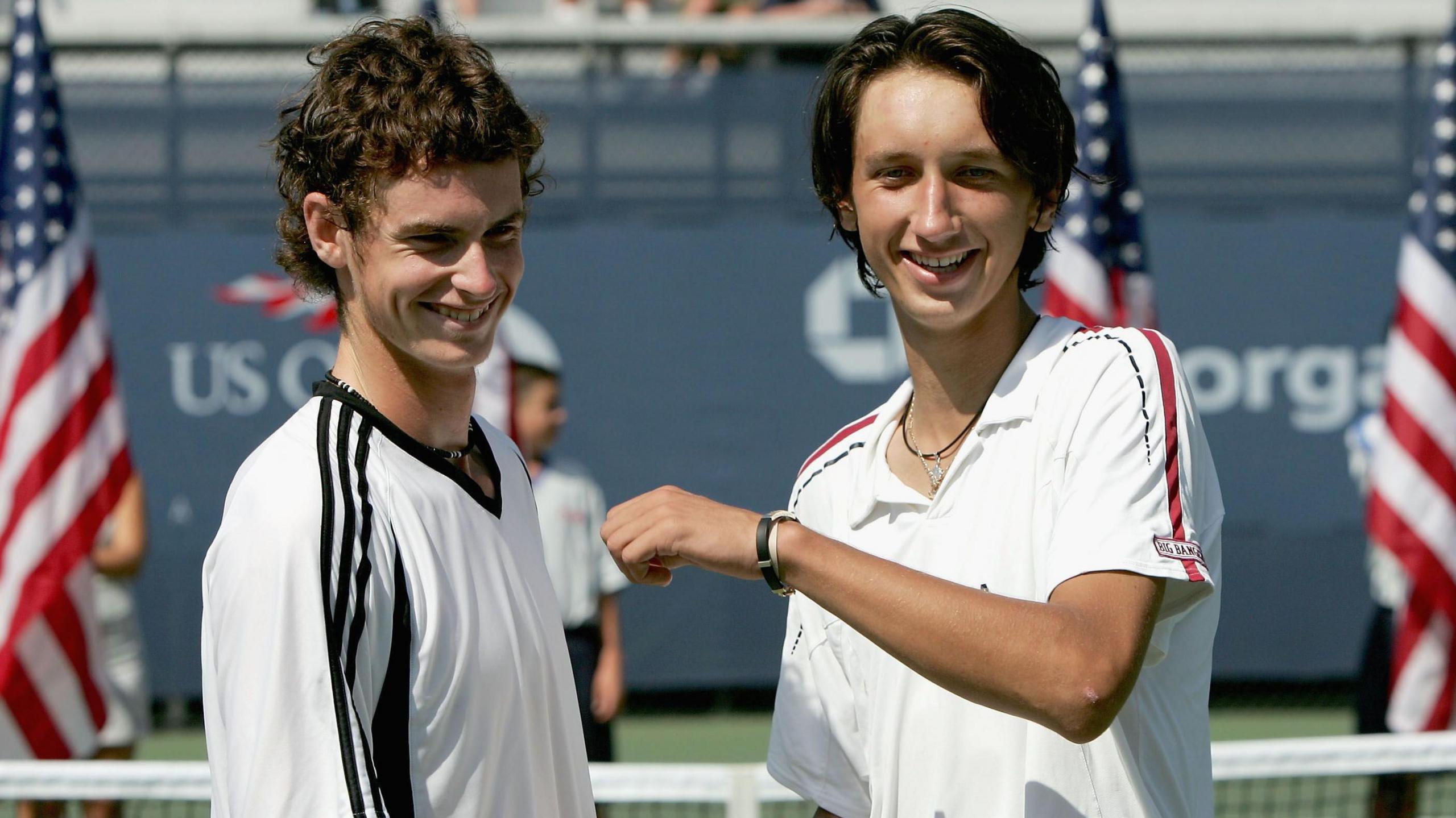
Murray had a 4-0 winning record against Stakhovsky after they both turned professional
Murray's dry humour was already established during his junior days.
"Who's the greatest player in the history of Scotland?" a reporter probed.
"Me?" he replied.
Murray added: "My mum was an OK player, but we've got one senior guy who's, like, 220 in the world. Apart from him, there's not really anybody that's been very good."
That "senior guy" was Alan Mackin, whose win-loss tour level record reached 1-15. Murray retired with a 739-262 tally.
First up for Murray in the 2004 junior title run was 15-year-old Argentine Juan Martin del Potro, who was walloped 6-0 6-1.
Twelve years later, Murray beat Del Potro again in the Rio Olympics final - by which point both men had won a US Open men's title.
And if there is familiarity about the name of Stakhovsky, the man who stood in Murray's way in the final, there is good reason for that.
The Ukrainian achieved a jaw-dropping 2013 victory against Roger Federer at Wimbledon, boasting he "kicked the butt" of the Swiss. With Federer nursing a sore backside, Murray swooped for that title, too.
Murray's retirement came just weeks ago. His body had been sending code-red messages for years; the mind eventually took heed.
His game was born in Dunblane and nurtured in Spain, but New York was where observers began measuring him up against Britain's leading man Henman.
"I've been compared to him a lot, which is great," Murray said in 2004. "I think I can do it. But just now I'm nowhere near as good as Tim."
Henman reached six Slam semi-finals - the last coincidentally came at the 2004 US Open - but a final remained elusive.
After beating Stakhovsky, Murray acknowledged the burden coming his way.
"This tournament's a big deal for me, but in a few years everyone's going to have forgotten about it and they're going to be looking for me to win in the senior Grand Slams," he said. "I believe that I can go right to the top."
Junior singles champions at Slams seldom win majors as adults.
Since Murray in 2004, only one subsequent boys' singles Grand Slam winner - Marin Cilic - has added a senior singles major.
Britain's Oli Golding won the 2011 US Open boys' singles but only played three matches at ATP Tour level, losing all three.
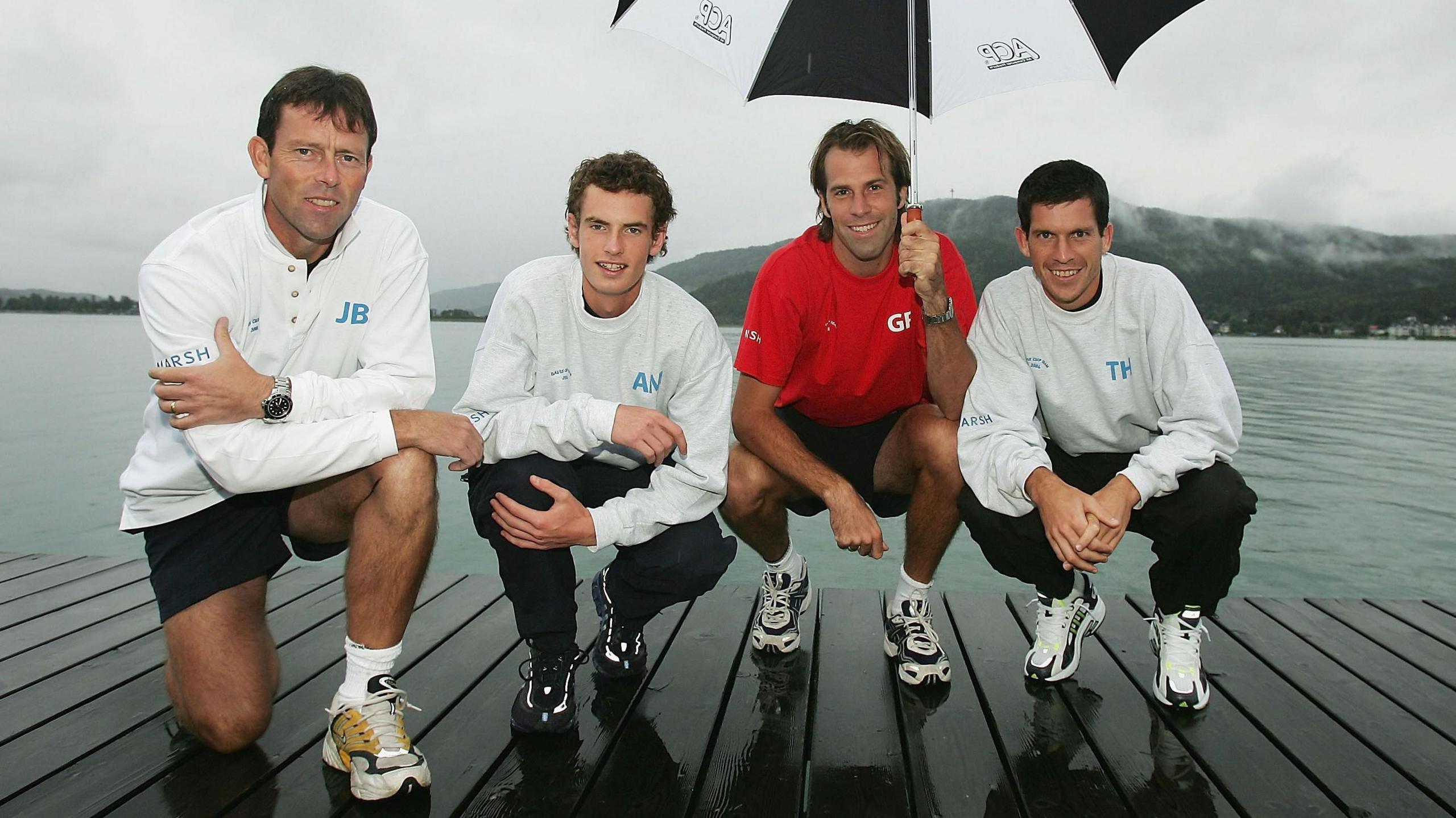
Later in September 2004, Murray joined Greg Rusedski and Tim Henman in Jeremy Bates' Great Britain Davis Cup team
How did Murray celebrate in 2004?
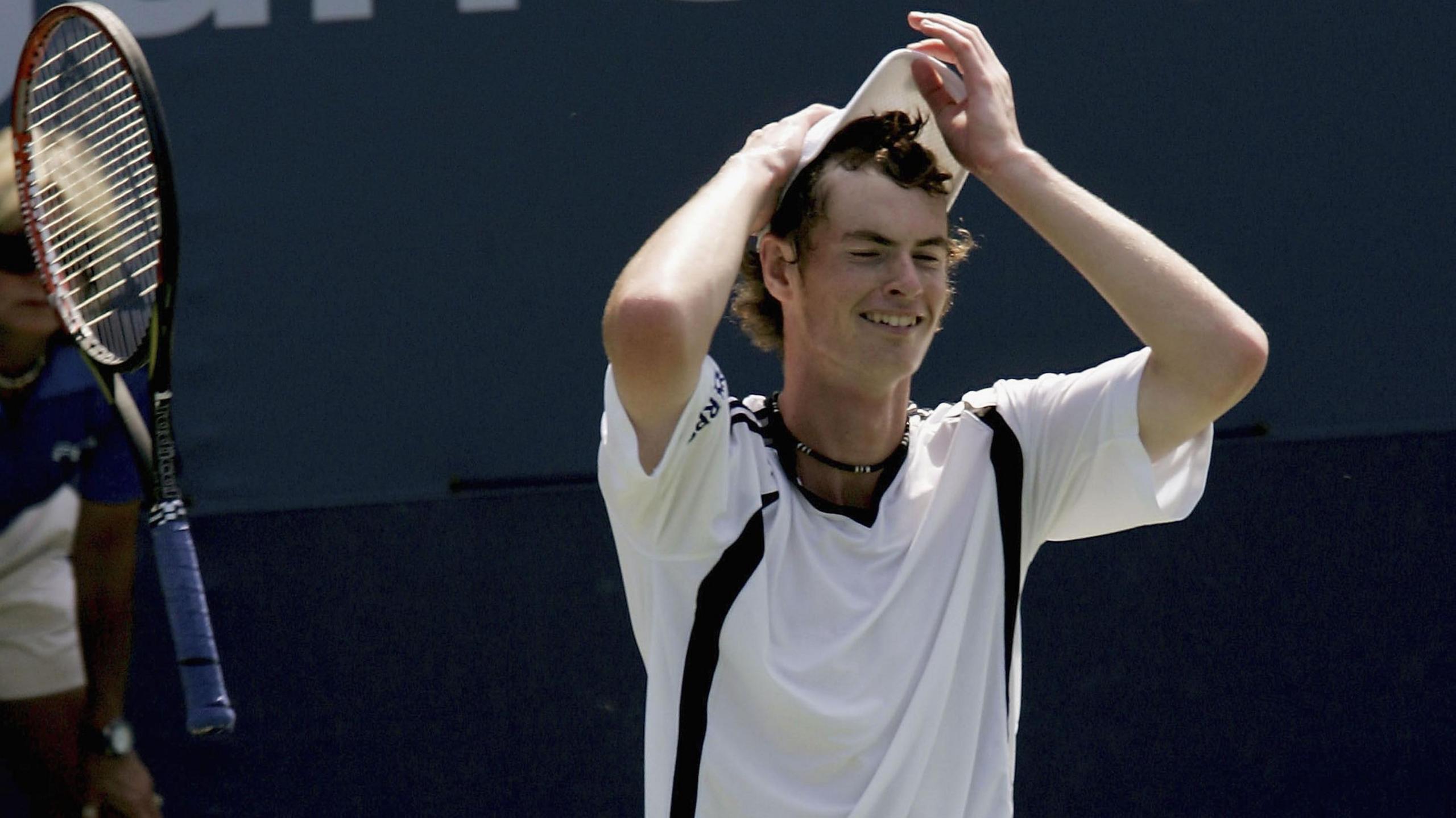
Murray went on to win Wimbledon twice and the US Open once after joining the senior ranks
Murray rode into an Uptown nightclub on a white horse, partied with Lindsay Lohan and the Strokes, and had one of sport's great lost weeks.
Except, of course, that's not true.
"I've got to go and get a flight now, which I'm a bit disappointed about," he said.
It was suggested he might head back to a celebratory haggis dinner.
"Well, I do like haggis, but I don't really eat it and they don't sell it in Spain," Murray said.
Barcelona had been Murray's home for a while, and local cuisine also had its obstacles.
"I hate paella," said the teenager.
Perhaps Murray has since warmed to Spain's national dish - Carlos Alcaraz's favourite.
Either way, as the Murrays head for the Med, one thing is off the menu for now: tennis.
You can safely bet it won't remain that way for long.
Related topics
- Published1 August 2024
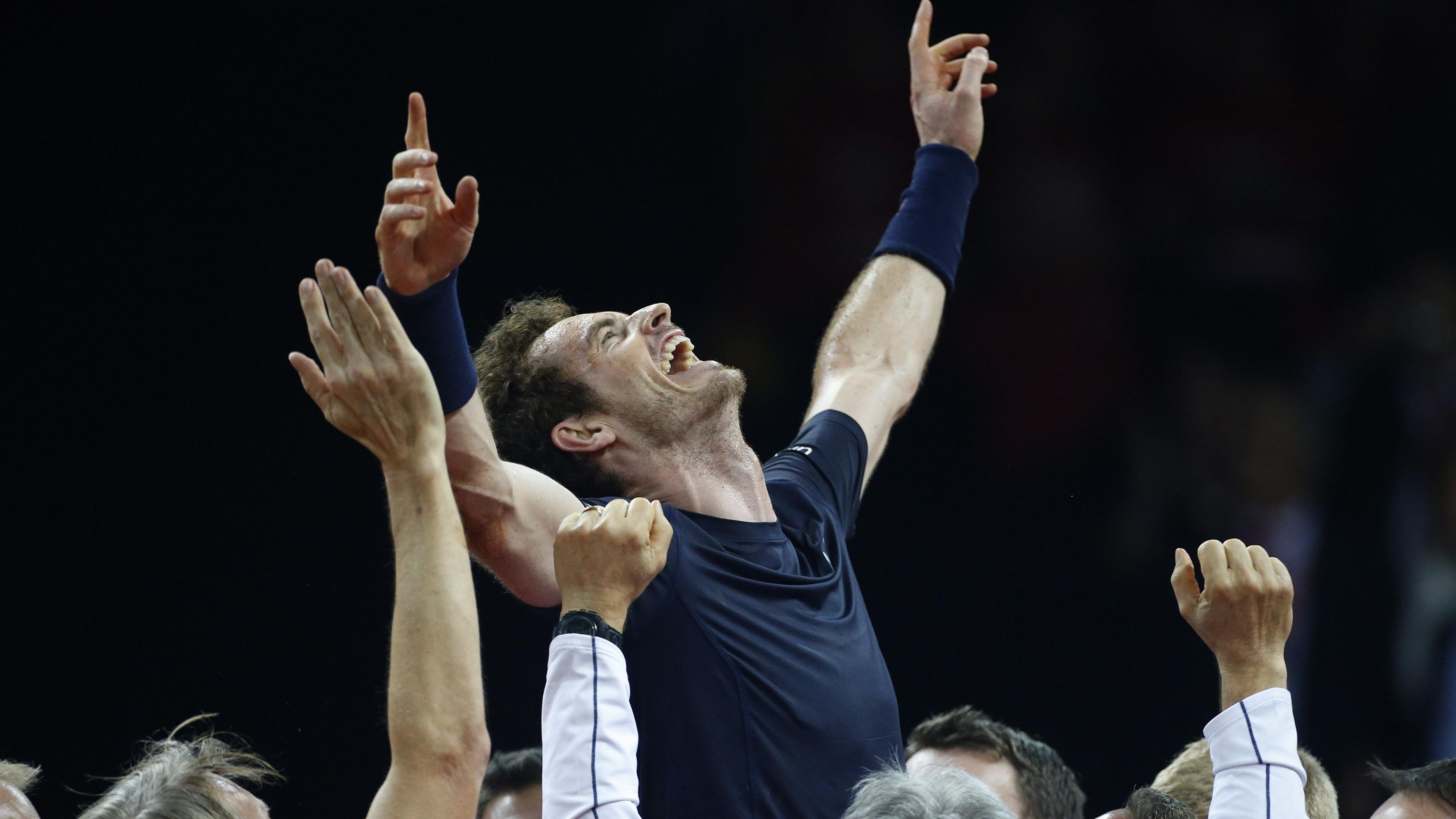
- Published1 August 2024
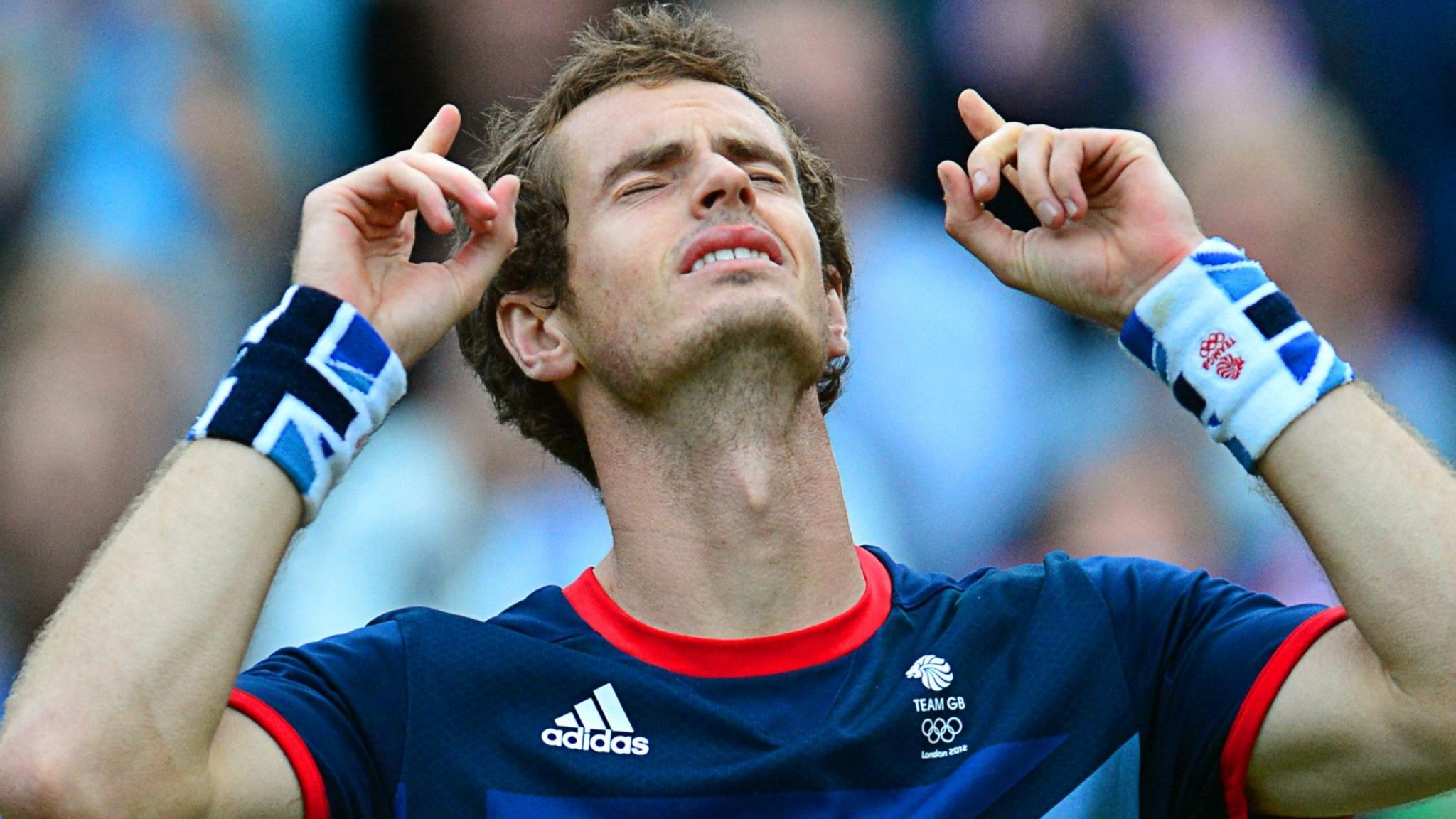
- Published4 July 2024
